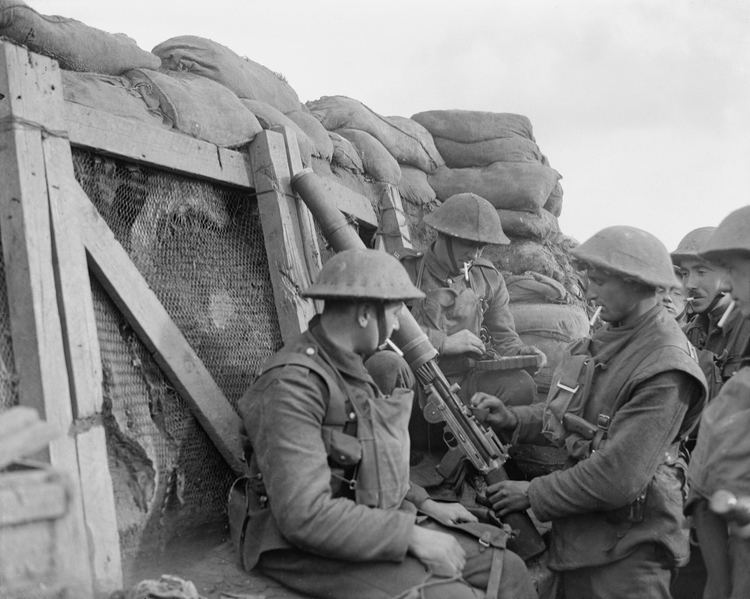Type Infantry | Size Division | |
 | ||
Active 21 August 1914 – 28 June 1919 Engagements World War IGallipoli CampaignWestern Front | ||
The 11th (Northern) Division, was an infantry division of the British Army during World War I, raised from men volunteering for Lord Kitchener's New Armies. The division fought in the Gallipoli Campaign and on the Western Front. The division's insignia was an ankh or ankhus.
Contents
History
The division came into existence on 21 August 1914 under Army Order No. 324, which authorised the formation of the first six new divisions of Kitchener's Army. The division was composed of early wartime volunteers and assembled at Belton Park near Grantham. By late spring 1915, the recruits were judged to be ready for active service, and the division was consequently ordered to reinforce the beleaguered garrison on Gallipoli. The division sailed for the Mediterranean in June and July 1915 and formed part of the Suvla Bay landing force on 7 August. The 6th (Service) Battalion, York and Lancaster Regiment of the 32nd Brigade was the first Kitchener unit to be involved in a major offensive operation of the war. Their action at Lala Baba Hill, on 7 August 1915, during the Suvla Bay landings, was costly, the commanding officer –Lieutenant Colonel E. H. Chapman –was killed as were all but 3 of the officers but they enter the history books with the hill being renamed York hill for the duration of the Gallipoli Campaign.
The division continued to serve at Gallipoli, suffering high casualties, until the evacuation of Suvla in December 1915. After a period of time in Egypt guarding the Suez Canal, the division was transferred to the Western Front and served there from the Battle of the Somme in 1916 until the end of the war, which arrived on 11 November 1918. On 28 June 1919, exactly five years since the assassination of Archduke Franz Ferdinand of Austria, the 11th (Northern) Division was officially disbanded, having sustained more than 32,100 casualties during the war.
Commanders
Order of Battle
The division comprised the following infantry brigades:
